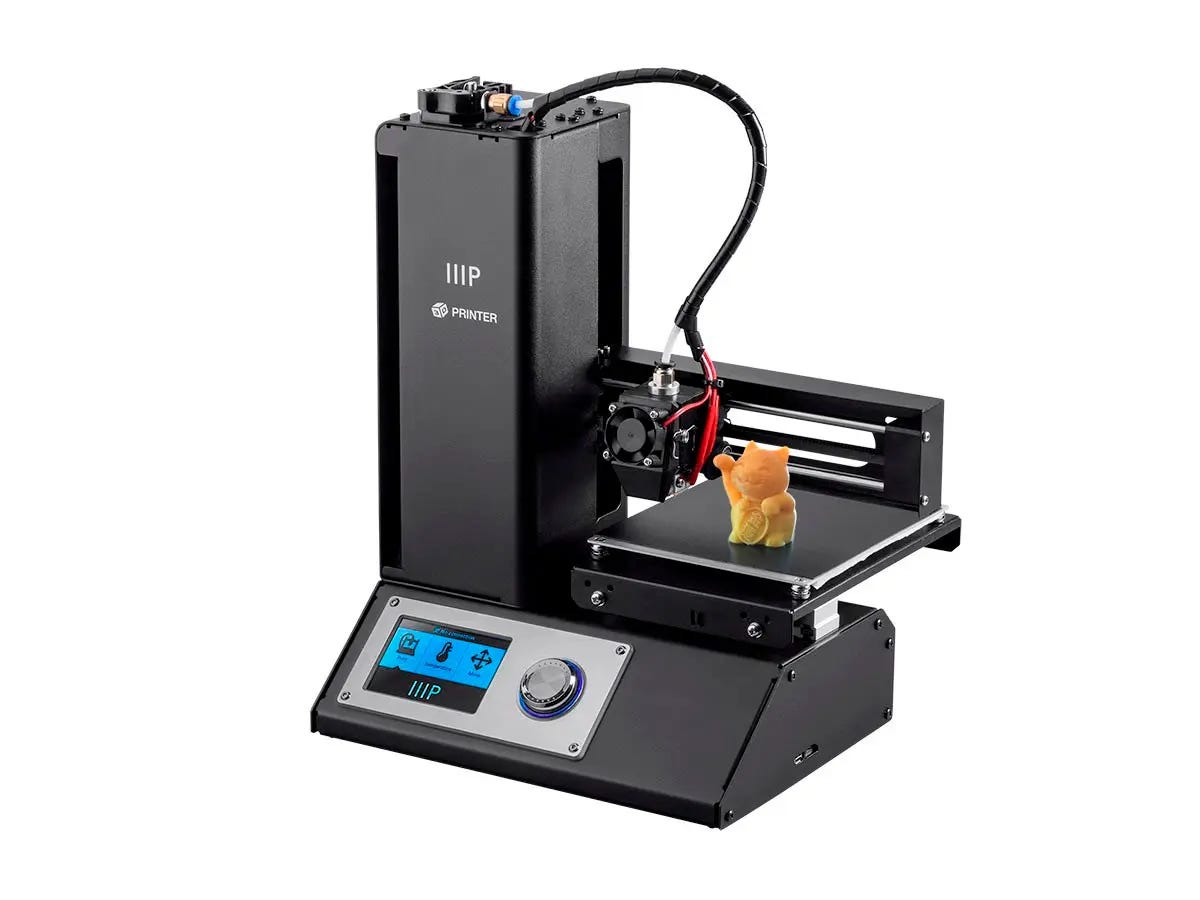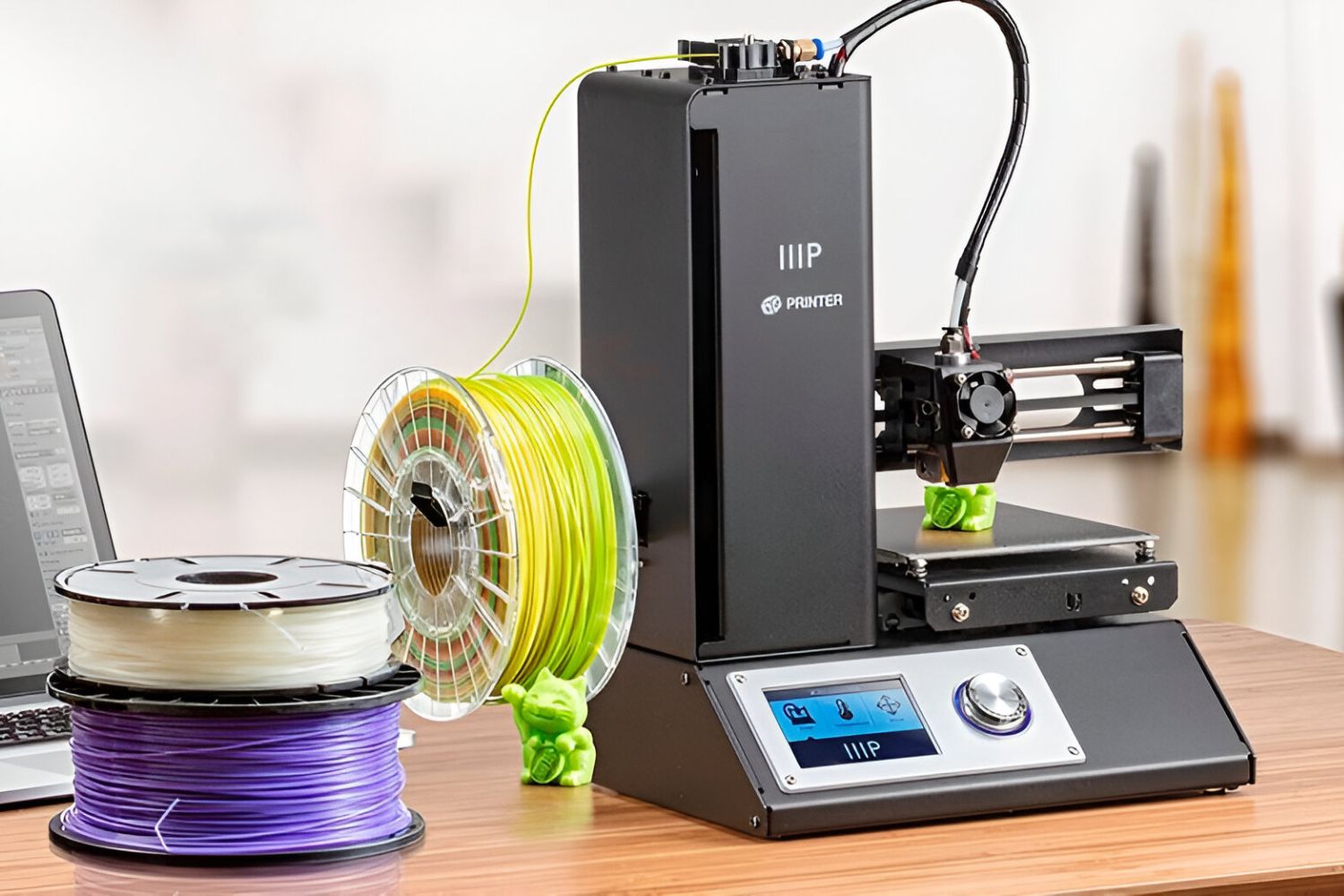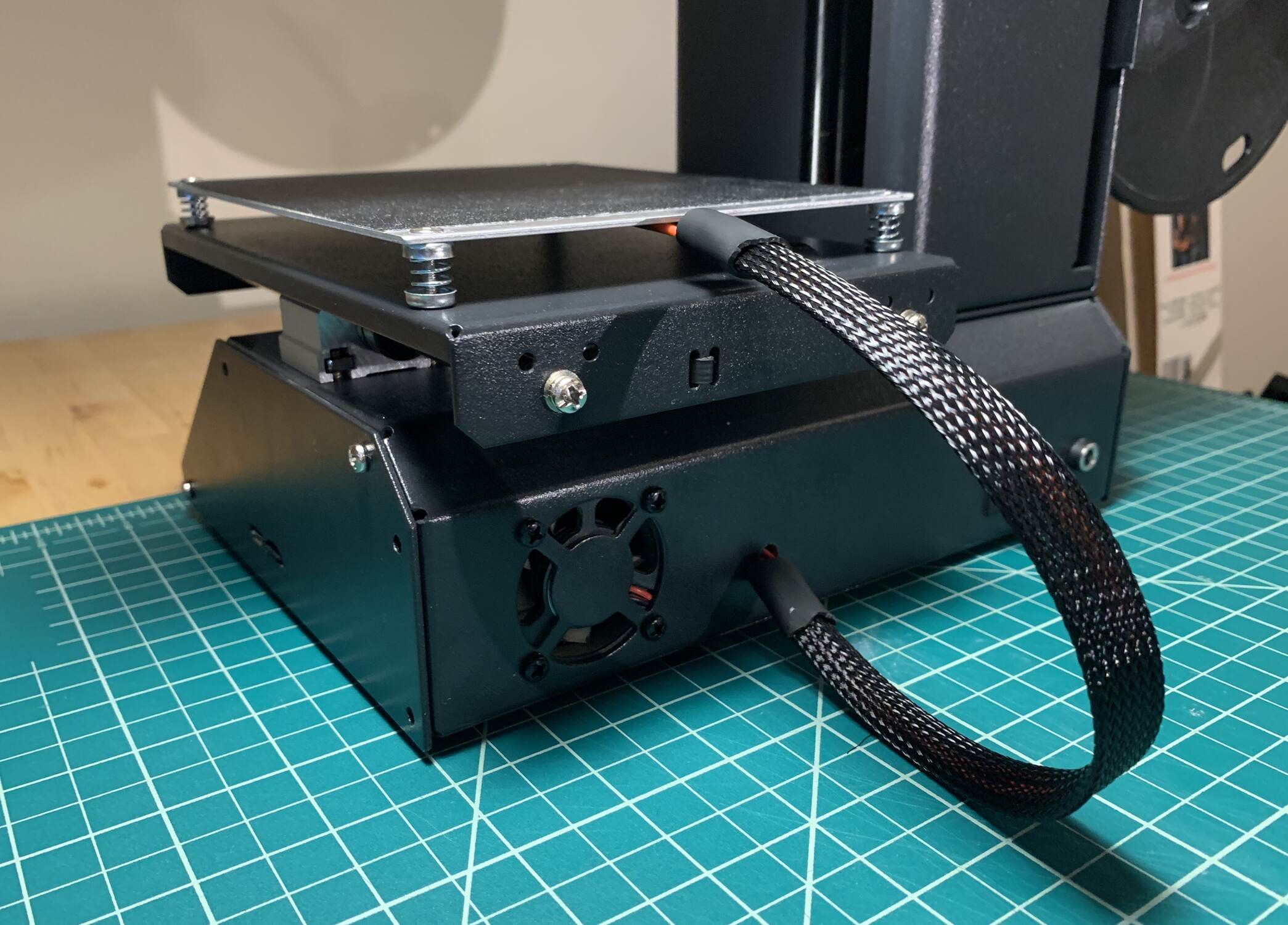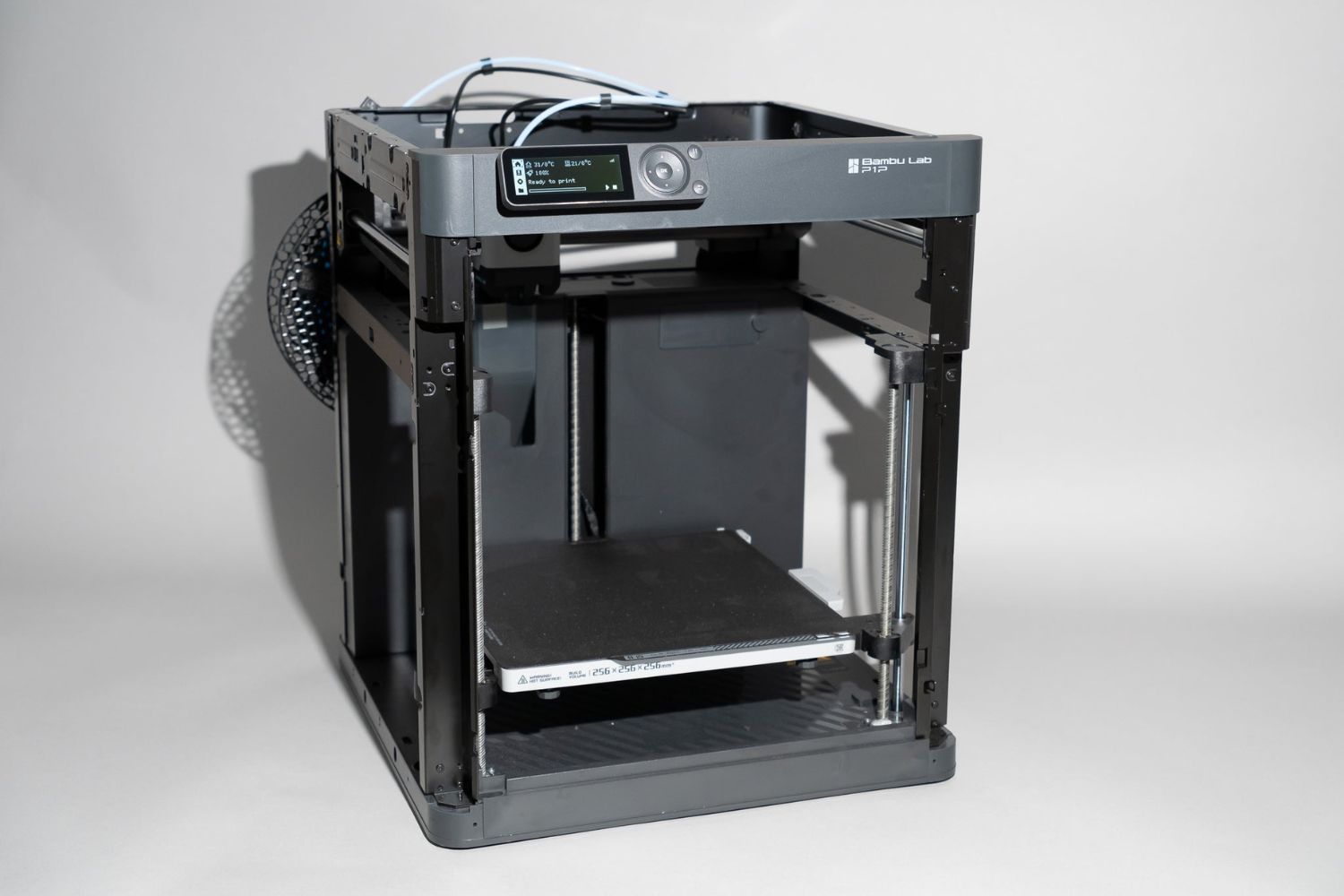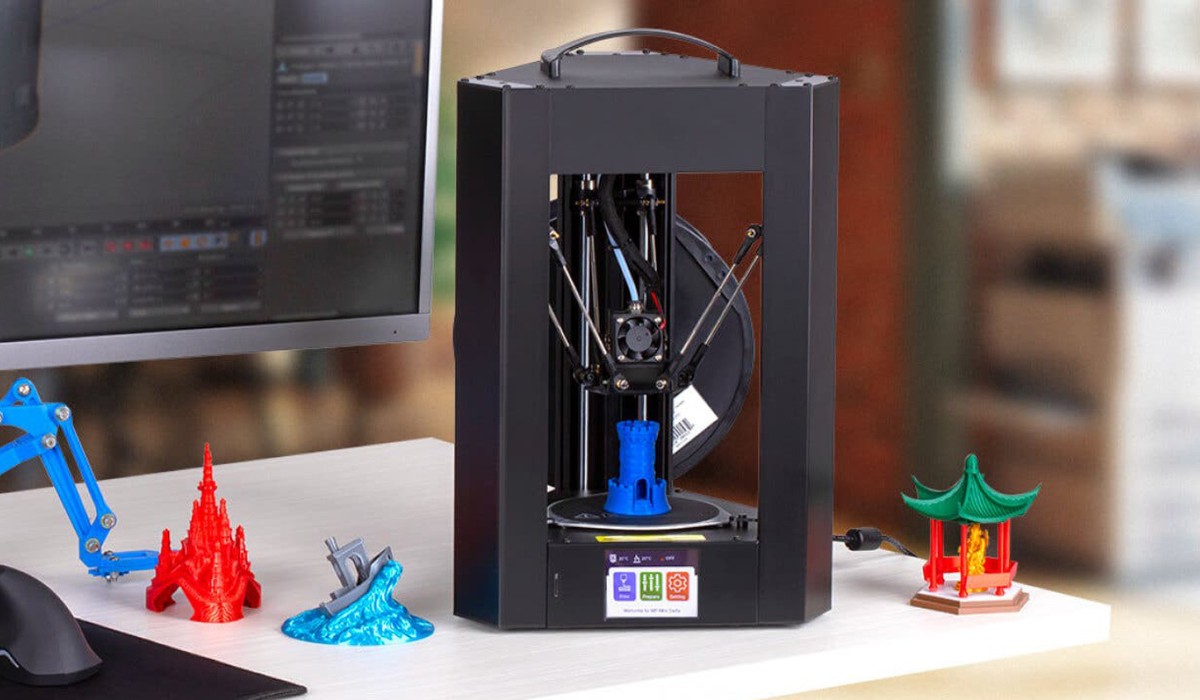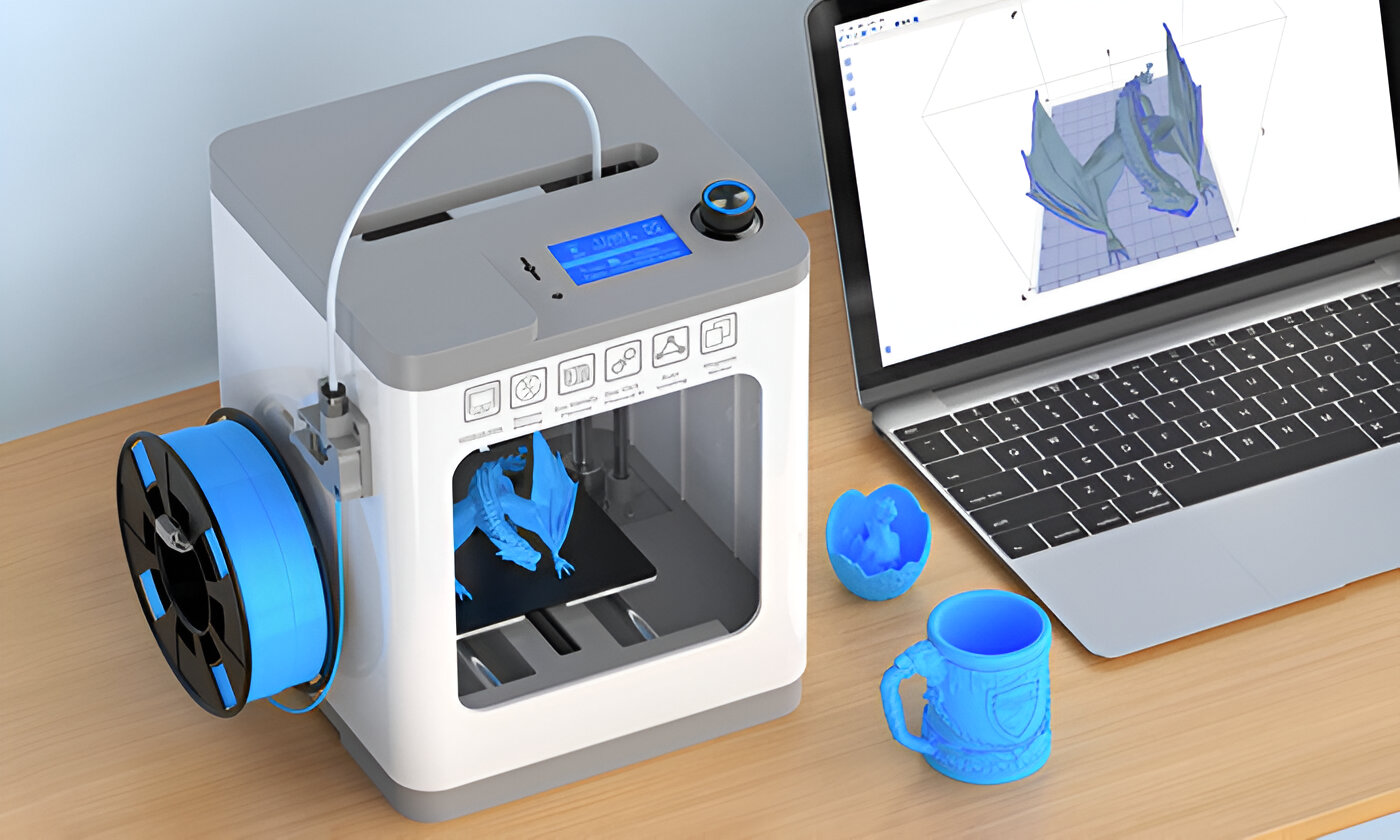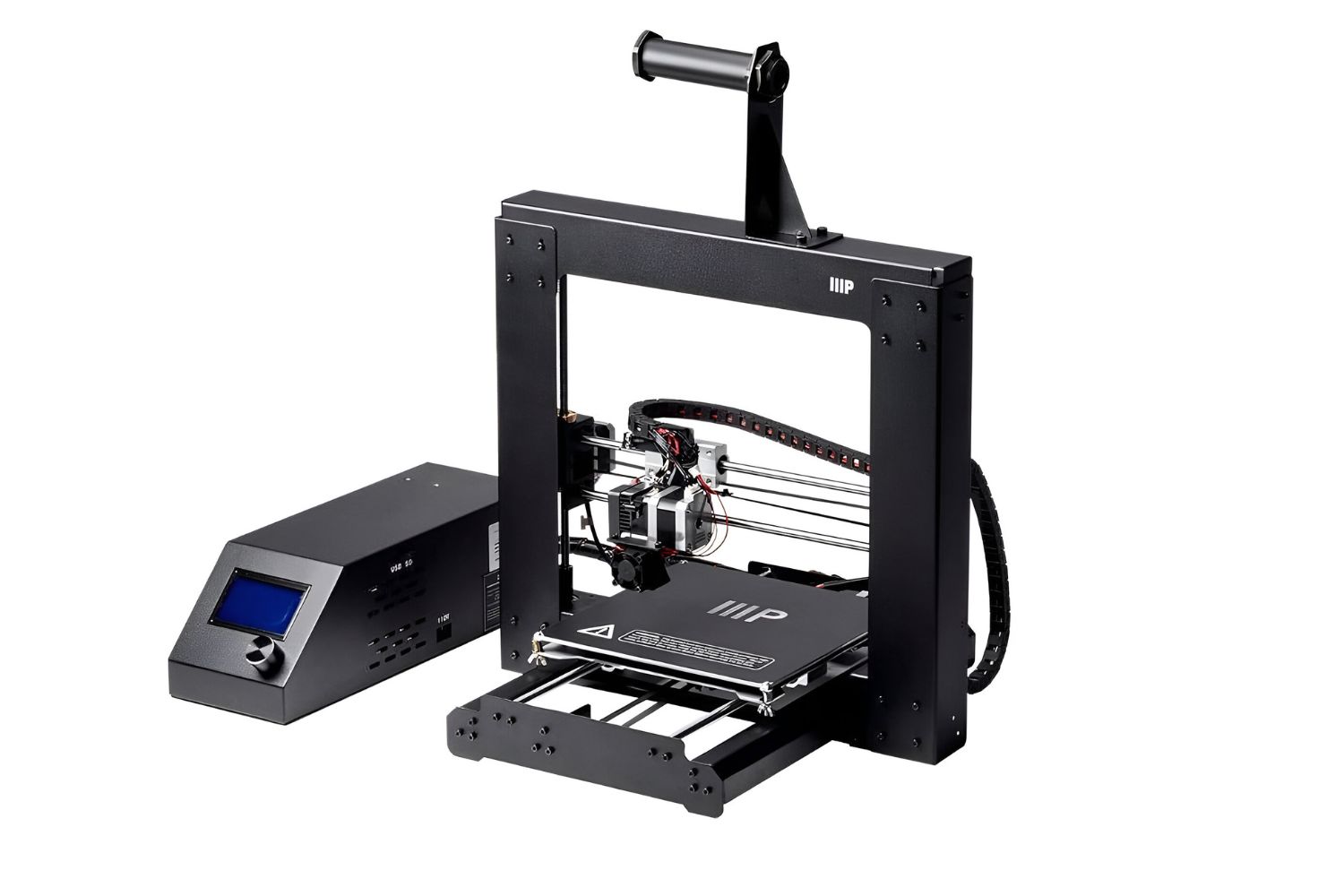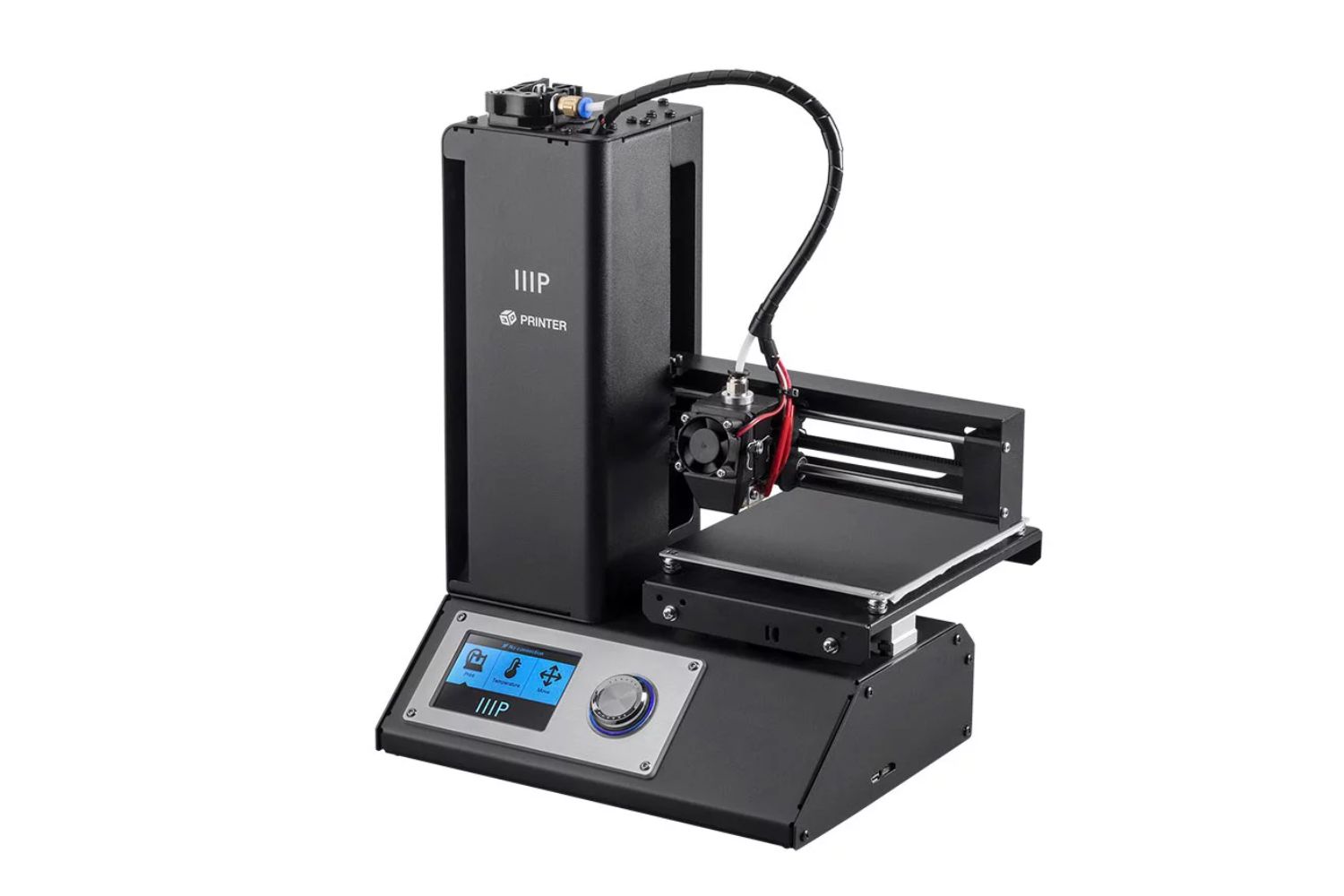Introduction
When it comes to 3D printing, the choice of filament plays a crucial role in determining the quality and durability of the printed objects. The filament is the material used by the 3D printer to create the physical layers of the object. The Monoprice Mini 3D printer is a popular choice for beginners and hobbyists due to its affordable price and ease of use. But what type of filament can this printer use?
The Monoprice Mini 3D printer is compatible with various types of filaments, each offering unique characteristics and applications. By understanding the different filament options available, you can choose the one that best suits your specific needs and preferences.
In this article, we will explore the various filament options that can be used with the Monoprice Mini 3D printer. From the commonly used PLA and ABS filaments to the more specialized options like PETG, TPU, wood, metal, and carbon fiber filaments, we will dive into the properties and benefits of each material.
By the end of this article, you will have a comprehensive understanding of the filament options available for the Monoprice Mini 3D printer, allowing you to make an informed decision when selecting the filament for your next 3D printing project.
PLA Filament
PLA (Polylactic Acid) filament is the most commonly used 3D printing material and is highly compatible with the Monoprice Mini 3D printer. It is a biodegradable and environmentally friendly filament, making it a popular choice among 3D printing enthusiasts.
PLA filament is derived from renewable resources such as cornstarch or sugarcane, making it a sustainable option. It has a lower printing temperature compared to other filaments, reducing the likelihood of warping or cracking during the printing process.
One of the key advantages of PLA filament is its wide range of available colors. Whether you want bright and vibrant hues or subtle and muted tones, there is a PLA filament to suit your preferences. Additionally, PLA filament produces minimal odor during printing, making it more pleasant to work with.
PLA prints have a smooth surface finish and excellent detail resolution, making it ideal for printing decorative items, prototypes, or objects that require intricate designs. However, it is worth noting that PLA is not as heat-resistant as other filaments, limiting its applications for functional and high-temperature parts.
Another significant benefit of PLA filament is its low printing bed requirements. It adheres well to most printing surfaces, including glass or painter’s tape, without the need for a heated bed. This makes it easier to set up and use with the Monoprice Mini 3D printer, especially for beginners.
In summary, PLA filament is a versatile and user-friendly option for the Monoprice Mini 3D printer. It offers a wide range of colors, excellent detail resolution, and is environmentally friendly. However, it is important to consider its limitations in terms of heat resistance and functional applications.
ABS Filament
ABS (Acrylonitrile Butadiene Styrene) filament is another popular option for 3D printing with the Monoprice Mini 3D printer. Known for its strength and durability, ABS filament is commonly used for functional parts and prototypes that require higher temperature resistance.
One of the key advantages of ABS filament is its ability to withstand higher temperatures than PLA. This makes it suitable for applications where the printed object might be exposed to heat, such as automotive parts, electronic enclosures, or household items.
In addition to its heat resistance, ABS filament also offers good impact resistance, making it less prone to cracking or breaking under stress. This property makes it a preferred choice for engineering applications or parts that require mechanical strength.
ABS filament requires a heated print bed to ensure proper adhesion during printing. The Monoprice Mini 3D printer is equipped with a heated bed, making it compatible with printing ABS filament. However, it is important to note that ABS filament can be prone to warping due to its higher printing temperature, so a heated bed and adequate ventilation are necessary for successful prints.
One thing to keep in mind when working with ABS filament is that it tends to emit a noticeable odor during printing. It is recommended to operate the printer in a well-ventilated area or use a 3D printer enclosure to minimize the smell.
ABS filament comes in a limited range of colors compared to PLA. However, it is possible to post-process ABS prints by sanding, painting, or using acetone smoothing techniques to achieve a smooth and polished finished look.
In summary, ABS filament is a strong and heat-resistant option for the Monoprice Mini 3D printer. It is suitable for functional parts and applications where durability and temperature resistance are important. However, it requires a heated bed, proper ventilation, and post-processing techniques to achieve optimal results.
PETG Filament
PETG (Polyethylene Terephthalate Glycol) filament is a versatile and durable material that can be used with the Monoprice Mini 3D printer. It offers a balance of strength, flexibility, and ease of printing, making it a popular choice for a wide range of applications.
One of the key advantages of PETG filament is its excellent layer adhesion, which results in strong and durable prints. It is resistant to impacts and offers good resistance to chemicals and moisture, making it suitable for functional parts or objects that might come into contact with water.
PETG filament is also known for its transparency and clarity, making it a great option for printing objects that require a see-through or translucent appearance. It has a glossy finish and can mimic the look of glass, making it ideal for printing vases, light fixtures, or decorative items.
Another notable feature of PETG filament is its flexibility. Unlike more rigid filaments like ABS, PETG offers a certain level of flexibility, allowing the printed objects to withstand bending or stress without breaking. This property makes it suitable for printing objects that require some level of flexibility or impact resistance.
When it comes to printing PETG filament, it is important to note that it typically requires a heated bed and a slightly higher printing temperature compared to PLA. The Monoprice Mini 3D printer is equipped with a heated bed that can accommodate PETG printing requirements.
Although PETG filament is relatively easy to print with, it can be prone to stringing and oozing. Proper retraction settings and temperature calibration can help minimize these issues. Additionally, PETG filament might require slower printing speeds compared to other materials to achieve optimal print quality.
In summary, PETG filament is a versatile and durable option for the Monoprice Mini 3D printer. It offers strong and flexible prints with good resistance to impacts and moisture. Its transparency and glossy finish make it ideal for objects that require a see-through or translucent appearance.
TPU Filament
TPU (Thermoplastic Polyurethane) filament is a flexible and elastic material that can be used with the Monoprice Mini 3D printer. It offers unique properties that make it ideal for printing objects that require stretchability and durability.
One of the key advantages of TPU filament is its excellent elasticity. It can be stretched and bent without losing its shape, making it suitable for printing objects such as phone cases, footwear, or wearable accessories. TPU filament is also known for its resistance to oils, greases, and abrasions, further enhancing its durability.
TPU filament is available in different shore hardness ratings, which indicates the material’s flexibility. Lower shore hardness indicates a softer and more flexible filament, while higher shore hardness offers a stiffer and less flexible result. This gives you the flexibility to choose the appropriate TPU filament for your specific application.
When it comes to printing TPU filament with the Monoprice Mini 3D printer, it is important to make some adjustments to the printer settings. TPU has a tendency to be more challenging to print compared to other filaments due to its flexible nature. Lowering the printing speed, using a direct drive extruder, and enabling retraction can help minimize issues such as stringing or clogging.
It is worth noting that TPU filament might require a higher printing temperature and a heated bed to ensure proper adhesion and prevent warping. The Monoprice Mini 3D printer’s heated bed feature makes it compatible with the printing requirements of TPU filament.
TPU filament is available in a variety of colors, allowing for creative and vibrant prints. Its flexibility and elasticity make it a suitable choice for functional parts, prototypes, or objects that require some level of flexibility and durability.
In summary, TPU filament offers flexibility and elasticity, making it ideal for printing objects that require stretchability and durability. With the right adjustments and printer settings, the Monoprice Mini 3D printer can successfully print TPU filament, opening up a wide range of possibilities for your 3D printing projects.
PLA+ Filament
PLA+ (Polylactic Acid Plus) filament is an improved version of PLA filament that offers enhanced strength and durability. It is compatible with the Monoprice Mini 3D printer and provides a good balance between ease of printing and quality of the printed objects.
PLA+ filament is similar to PLA in its biodegradable and environmentally friendly nature. However, it goes a step further by incorporating additives that strengthen the material, making it more resistant to impact and heat compared to traditional PLA filament.
One of the key advantages of PLA+ filament is its increased layer adhesion, resulting in stronger and more robust prints. This makes it suitable for both functional parts and objects that require better durability than regular PLA filaments can provide.
When it comes to printing with PLA+ filament, it shares many similarities with PLA in terms of printing temperature and bed adhesion. The Monoprice Mini 3D printer’s compatibility with PLA filaments makes it an ideal choice for printing PLA+ filament as well.
PLA+ filament offers improved print quality compared to regular PLA, with smoother surfaces and better detail resolution. It also has a wider range of available colors, allowing for more creative and vibrant prints.
Furthermore, PLA+ filament has minimal odor during printing, similar to regular PLA, providing a more pleasant and user-friendly printing experience.
In summary, PLA+ filament is an excellent choice for the Monoprice Mini 3D printer, offering improved strength and durability compared to regular PLA filament. With its ease of printing and enhanced quality, PLA+ filament is suitable for a wide range of 3D printing applications.
Wood Filament
Wood filament is a unique and exciting option for 3D printing with the Monoprice Mini 3D printer. It is a composite filament that combines a base plastic, such as PLA, with finely ground wood particles. This combination results in printed objects that have the appearance and feel of real wood.
One of the key advantages of wood filament is its ability to create aesthetically appealing prints with a natural wood-like texture. The finely ground wood particles give the printed objects a unique grain pattern, enhancing their visual appeal. This makes wood filament ideal for printing decorative objects, figurines, or items that require a rustic or organic look.
Wood filament is relatively easy to print with, similar to PLA filament. It has similar printing temperatures and bed adhesion requirements, making it compatible with the Monoprice Mini 3D printer. However, it is worth noting that wood filament can be slightly more abrasive than regular PLA, so a hardened steel nozzle is recommended for longer-lasting performance.
When printing with wood filament, it is important to consider the layer height and nozzle size. Due to the presence of wood particles, a larger nozzle size is preferable to avoid clogging during the printing process. Additionally, using a lower layer height can help bring out the wood grain and enhance the overall appearance of the printed object.
Post-processing techniques can further enhance the look of wood filament prints. Sanding the printed objects can help to smooth out any rough surfaces and bring out the wood grain. Additionally, applying a wood finish or stain can provide a more authentic and polished final result.
It is worth noting that wood filament has certain limitations. It is not as strong or durable as other filaments, so it may not be suitable for functional or load-bearing parts. Additionally, the wood particles in the filament can cause nozzle blockages if left idle for extended periods, so it is recommended to clean the nozzle after each use.
In summary, wood filament allows you to create 3D printed objects with the appearance and feel of real wood. Its unique grain pattern and natural texture make it perfect for decorative purposes or objects that require a rustic look. With the Monoprice Mini 3D printer, you can explore the creative possibilities of wood filament and add a touch of nature to your 3D prints.
Metal Filament
Metal filament is a fascinating option for 3D printing with the Monoprice Mini 3D printer. It allows you to create objects that have the appearance and weight of real metal, adding a touch of sophistication and elegance to your prints.
Metal filament is typically a composite material that combines a base plastic, such as PLA or ABS, with finely ground metal particles, such as copper, bronze, or aluminum. The metal particles give the printed objects a metallic sheen and texture, making them visually striking and realistic.
One of the key advantages of metal filament is the ability to create objects with the weight and feel of real metal. This makes it ideal for creating replicas, jewelry, or figurines that require a high level of detail and authenticity.
When it comes to printing with metal filament, it is important to consider the nozzle size and extrusion temperature. Metal filaments generally require a larger nozzle size to accommodate the metal particles, and higher extrusion temperatures to melt the plastic and bind the metal particles together.
Due to the presence of metal particles, metal filament can be more abrasive than regular filaments. It is recommended to use a hardened steel or brass nozzle to prevent excessive wear and prolong the nozzle’s lifespan.
Post-processing techniques can further enhance the appearance of metal filament prints. Sanding the printed objects can smooth out any rough surfaces and provide a polished finished look. Additionally, applying a metal patina or acrylic paint can give the prints a more authentic and realistic metal appearance.
It is important to note that metal filament is not as strong as solid metal objects, as the metal particles are distributed within the plastic matrix. Therefore, it may not be suitable for functional or load-bearing parts. However, with proper printing and post-processing techniques, it is possible to create stunning decorative or artistic pieces.
In summary, metal filament allows you to bring the look and feel of real metal to your 3D prints. It offers the ability to create visually striking and realistic objects. With the Monoprice Mini 3D printer, you can unleash your creativity and add a touch of metallic elegance to your designs.
Carbon Fiber Filament
Carbon fiber filament is a high-performance material that can be used with the Monoprice Mini 3D printer to create strong and lightweight objects. It combines a thermoplastic base, such as PLA or ABS, with carbon fiber strands, resulting in prints that exhibit exceptional strength and rigidity.
One of the key advantages of carbon fiber filament is its strength-to-weight ratio. The embedded carbon fiber strands add immense strength to the printed objects, making them highly resistant to impacts and capable of bearing heavy loads.
Carbon fiber filament offers a unique combination of strength, stiffness, and lightness, making it ideal for functional and structural applications. It is commonly used in industries such as aerospace, automotive, and engineering, where superior strength and performance are crucial.
When printing with carbon fiber filament, it is important to make some adjustments to the printer settings. Due to the presence of carbon fiber strands, a larger nozzle size is recommended to prevent clogging. Additionally, higher temperatures and slower print speeds are typically required to melt the plastic and properly bond the carbon fiber strands.
It is worth noting that carbon fiber filament can be more abrasive than regular filaments, meaning it can wear down brass nozzles quickly. Therefore, it is recommended to use a hardened steel or ruby nozzle for longer nozzle life and consistent printing performance.
The prints created with carbon fiber filament have a unique textured surface, resembling the appearance of carbon fiber composites. This distinctive look adds an aesthetic appeal to the printed objects, making them visually striking.
One important consideration when using carbon fiber filament is to ensure proper ventilation during printing. The carbon fiber particles released during the printing process can be harmful if inhaled, so it is important to operate the printer in a well-ventilated area or use a dedicated enclosure with a ventilation system.
In summary, carbon fiber filament offers exceptional strength, rigidity, and lightweight properties, making it an excellent choice for functional and structural applications. With the Monoprice Mini 3D printer, you can harness the power of carbon fiber filament to create high-performance prints with outstanding strength-to-weight ratios.
Conclusion
The Monoprice Mini 3D printer is a versatile machine that can work with various types of filaments, each offering unique characteristics and applications. Whether you are a beginner or an experienced 3D printing enthusiast, understanding the different filament options available for this printer is essential to choose the right material for your projects.
We explored several filament types compatible with the Monoprice Mini 3D printer, including PLA, ABS, PETG, TPU, PLA+, wood, metal, and carbon fiber filaments. Each filament has its own set of benefits and considerations, allowing you to find the perfect match for your specific requirements.
PLA filament, the most commonly used material, offers easy printing and a wide range of colors. ABS filament provides strength and heat resistance, making it suitable for functional parts. PETG filament offers a balance of strength, transparency, and moisture resistance. TPU filament provides flexibility and elasticity for objects requiring bending and stretching. PLA+ filament improves on the properties of PLA with enhanced strength and durability. Wood filament brings a natural and rustic look to prints. Metal filament creates realistic objects with the appearance and weight of real metal. Carbon fiber filament offers exceptional strength and rigidity, perfect for high-performance applications.
By considering these different filament options, you can unleash your creativity and explore a multitude of possibilities with the Monoprice Mini 3D printer. Whether you are interested in creating decorative items, functional prototypes, or artistic pieces, there is a filament that can meet your specific needs.
It is important to note that each filament may require specific printer settings, such as temperature, bed adhesion, and nozzle considerations. It is recommended to refer to the manufacturer’s guidelines and perform test prints to optimize the settings for each filament type.
With the knowledge gained from this article, you are now equipped to make informed decisions about the type of filament to use with your Monoprice Mini 3D printer. Whether you are aiming for strength, flexibility, durability, or aesthetic appeal, there is a filament out there that can bring your ideas to life. So, go ahead and unleash your creativity with the wide variety of filament options available for the Monoprice Mini 3D printer!







